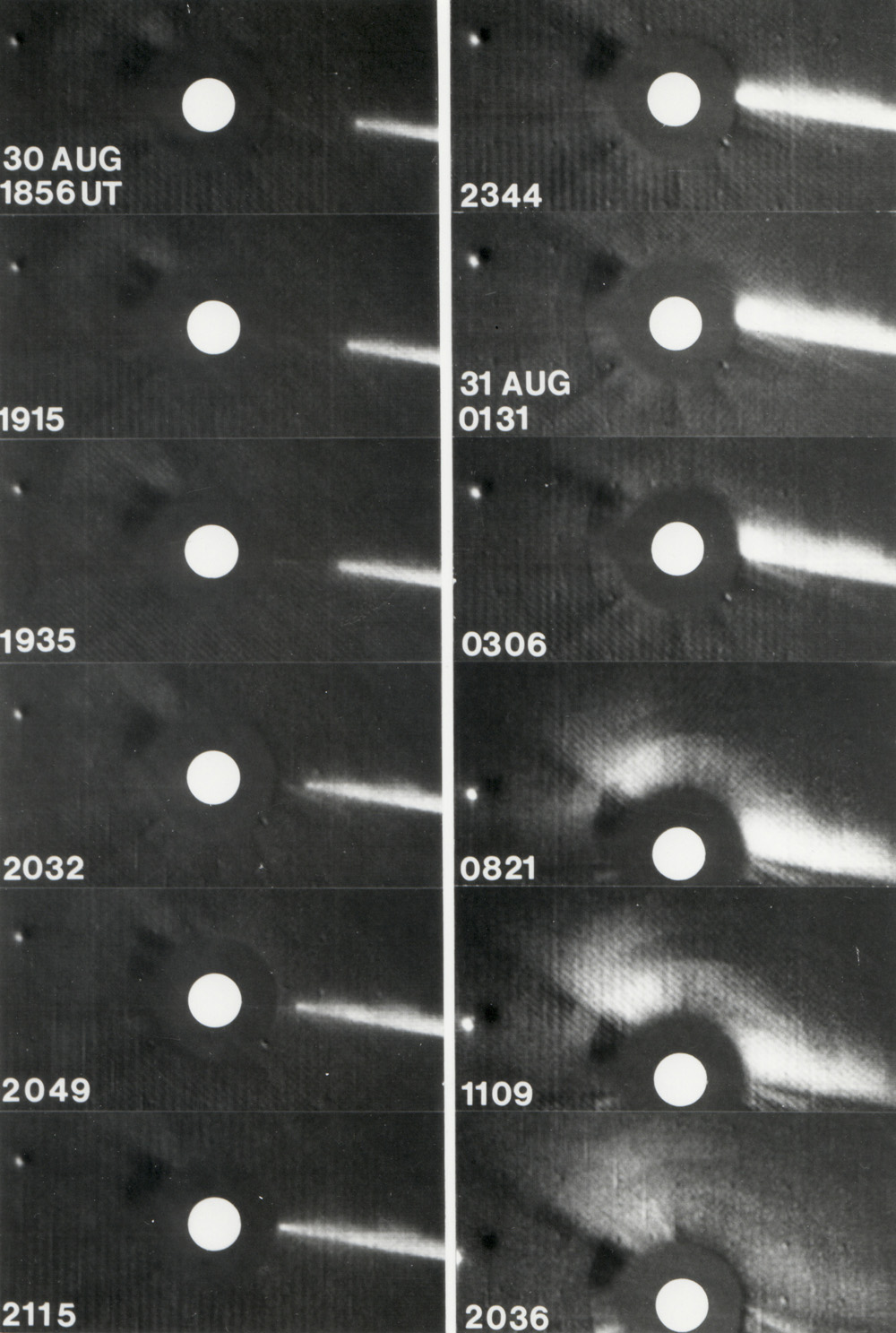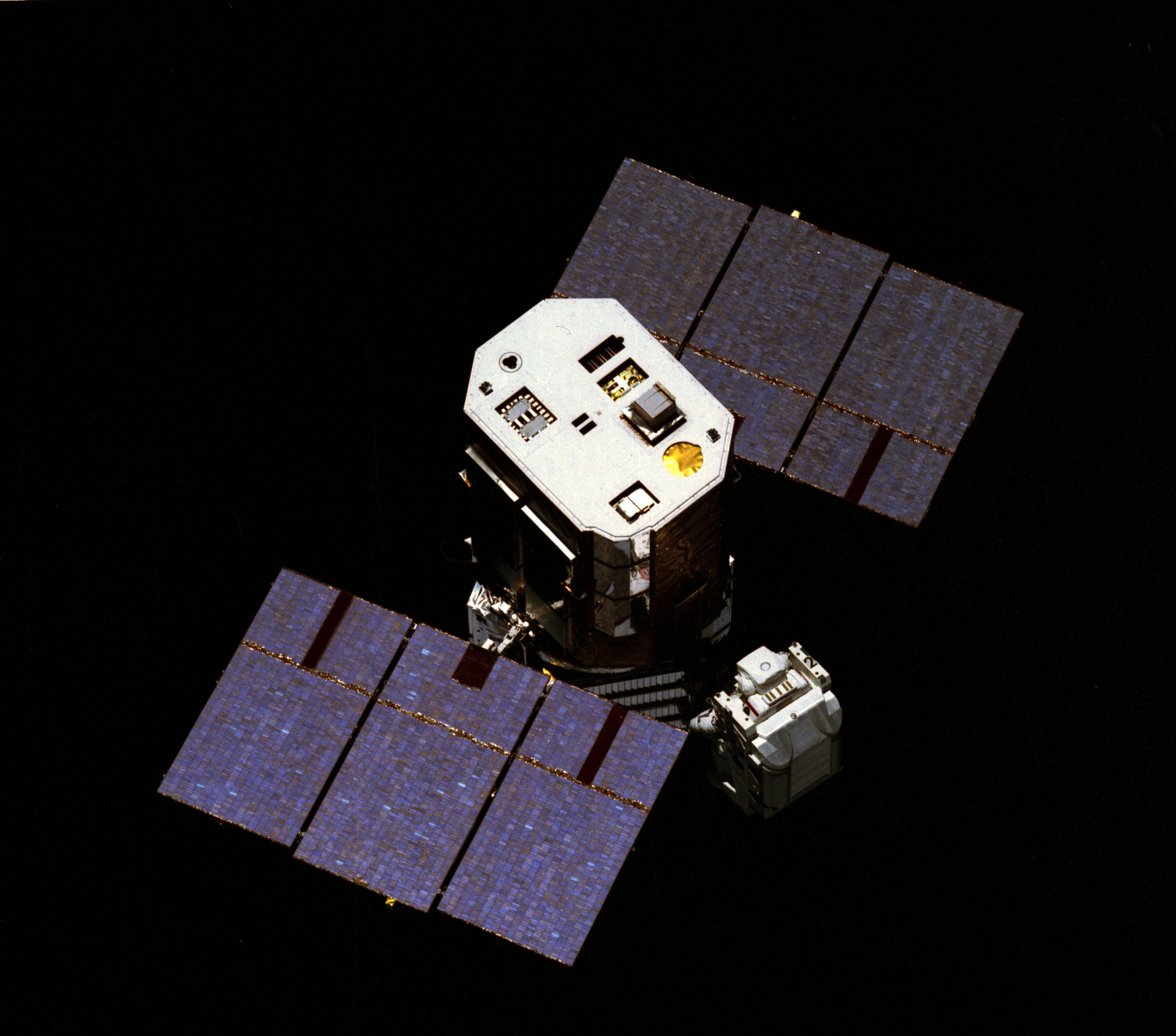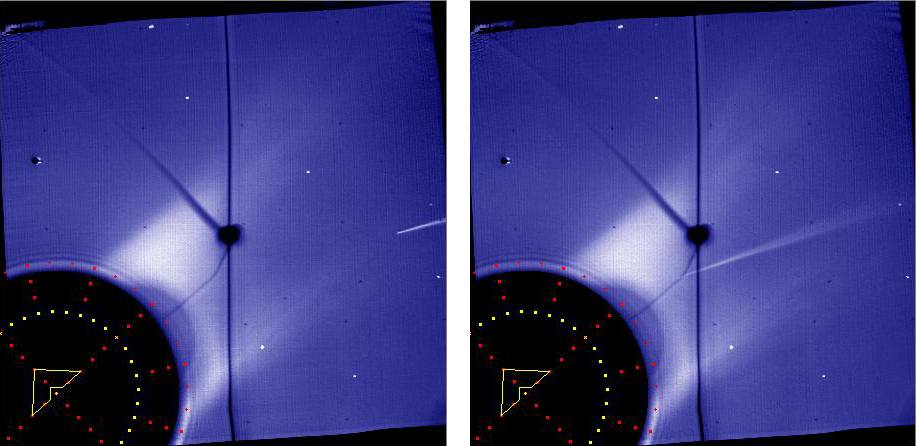
Perihelion: 1979 August 30.95, q = 0.005 AU
The very first comet I ever observed, Comet Tago-Sato-Kosaka 1969g – a previous “Comet of the Week” – was also the first comet ever to be observed from space, an event which took place in mid-January 1970. Since that time many, many comets have been observed by orbiting satellites, and a few have even been visited by spacecraft missions; some of these are additional “Comets of the Week.” It was inevitable that, at some point, comets would begin to be discovered by satellites in orbit, and indeed the first such instance happened about a decade after the first space-based comet observations. This first satellite-based comet discovery came about in a rather dramatic and unexpected fashion, however.
In September 1981 a team of scientists at the Naval Research Laboratory (NRL) in Washington, D.C. – which included Russ Howard, who made the actual discovery, along with Martin Koomen and Don Michels, who developed the instrumentation – reported that they had detected images of a bright comet – at least as bright as Venus – in images taken two years earlier by the SOLWIND white-light coronagraph aboard the U.S. Defense Department satellite P78-1 (which had been launched on February 24, 1979). The images, taken over a period of several hours on August 30 and 31, 1979, showed the bright, long-tailed comet approaching the sun and then disappearing behind the occulting disk that blocked the sun. Although the comet did not reappear afterward, images taken over the next several hours showed the material in the tail spreading out and surrounding the occulting disk before dispersing.
The meager and low-resolution astrometric data made orbital calculations somewhat problematical, but it soon became clear that the comet was a Kreutz sungrazer – a class of comets that includes several other “Comets of the Week” and which is discussed as a whole in a future “Special Topics” presentation. The comet clearly disintegrated as it passed through perihelion, and since it had approached from behind the sun the tail material that enshrouded the occulting disk afterward was between Earth and the sun and thus its brightness was enhanced by a forward scattering of sunlight.

There have been no reports of ground-based detections of the comet as it approached perihelion – and, indeed, late August presents poor viewing geometry for inbound Kreutz sungrazers in any event. There were also no reports of any ground-based detections of tail material after perihelion. The one possible ground-based detection of the comet came from a team of astronomers in then-Czechoslovakia who reported that spectra of the sun’s corona taken with a coronagraph at Lomnicky Stit Observatory a few hours after the comet’s perihelion revealed dim features that could possibly be due to silicon and nickel from dust grains within the comet’s tail.
Any thought that the appearance of this SOLWIND comet was a unique phenomenon began to be dispelled in July 1982, when the NRL team detected images of two additional comets in SOLWIND images, one in January 1981, the other in July 1981. Both of these were also found to be Kreutz sungrazers, and both were fainter than the first one, with neither of them surviving perihelion passage. Over the next three years, the NRL team detected three additional Kreutz sungrazing comets in SOLWIND images, the last of these appearing in July 1984. Then, on September 13, 1985, P78-1 was deliberately destroyed as part of an Anti-Satellite (ASAT) weapon test, although two of its instruments, including the SOLWIND coronagraph, were still operating. In more recent years a German amateur astronomer, Rainer Kracht, has detected four additional comets in archived SOLWIND data, with three of these being Kreutz sungrazers but with the fourth one (which appeared in September 1984) having a distinctly different orbit.

Fortunately, by the time of P78-1’s destruction NASA’s Solar Maximum Mission (SMM) satellite, which had been launched on February 14, 1980, but which had then suffered a major failure of its attitude-control system a few months later, had been repaired by astronauts aboard the Space Shuttle Challenger during a dramatic rescue-and-repair mission in April 1984. Among SMM’s instruments was a coronagraph, and in July of that year, SMM successfully took two images of the last SOLWIND sungrazer. Between 1987 and the time it entered Earth’s atmosphere and burned up on December 2, 1989, SMM detected ten additional comets, all Kreutz sungrazers. None of these survived perihelion passage and none of them were observed from the ground, although the brightest of them – SMM 5, which appeared on October 11 and 12, 1988 – was bright enough, and appeared at the right time of the year for favorable viewing geometry, that I made a couple of attempts to view it after perihelion – without success, obviously.
These SOLWIND and SMM comet discoveries indicated that there is a population of small Kreutz sungrazers that had not been heretofore suspected. The joint NASA/ESA SOlar and Heliospheric Observatory (SOHO) mission launched in December 1995, which carries better coronagraphs than those carried by SOLWIND and SMM, has raised this to a new level, with approximately 3400 Kreutz sungrazers having now been detected. The two spacecraft of the Solar-TErrestrial RElations Observatory (STEREO) mission launched in October 2006 have also detected numerous Kreutz sungrazers. The SOHO sungrazers are discussed in a previous “Comet of the Week” presentation, and as already mentioned the entire remarkable “family” of Kreutz sungrazers is the subject of a future “Special Topics” presentation.
More from Week 36:
This Week in History Special Topic Free PDF Download Glossary
Ice and Stone 2020 Home Page


